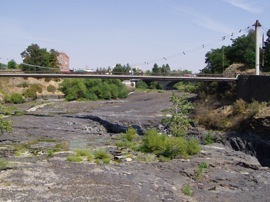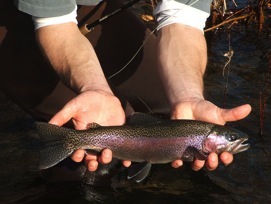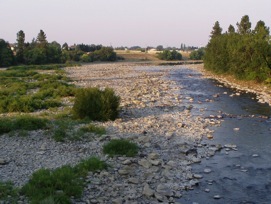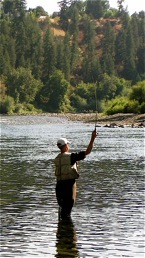Relicensing Issues

Relicensing Issues


The impacts associated with Avista’s Spokane River are significant and widespread, spanning across two states and two Indian reservations.
Post Falls Dam: harming Lake Coeur d’Alene and the Spokane River
For years, Avista’s Post Falls dam has adversely impacted the Spokane River and Lake Coeur d’Alene. Post Falls dam operations harm Lake Coeur d’Alene by causing shoreline erosion, movement of heavy metals, wetlands destruction and harm to natural and cultural resources owned by the Coeur d’Alene Tribe. The Department of Interior and Coeur d’Alene Tribe have proposed a number of reasonable management measures for the Lake, including control of aquatic weeds, erosion, and water pollution.
Post Falls dam also reduces flow downstream, in the Spokane River, harming water quality and fisheries habitat. To solve downstream problems, Avista should release more water over Post Falls dam during late summer – up to 800 cubic feet per second—more than twice the amount they release now.
Dewatering Spokane Falls
Operations of the Upper Falls and Monroe Street dams have impacted the two downtown Spokane waterfalls - at times completely de-watering these magnificent falls. During summer months, Avista diverts the entire river into the south channel of Riverfront Park. This leaves our beautiful downtown falls high and dry. In the future, Avista should keep at least 500 cfs in the middle and north channels to allow the falls to flow freely.
Filling up reservoirs with silt
The Nine Mile and Long Lake dams have caused an accumulation of enormous amounts of sediment by preventing normal, healthy flushing in the river. The reservoirs are literally filling up with dirt that would normally be carried downstream by the River. This is a major problem in the Nine Mile reservoir, which is nearly full, and in Lake Spokane. Over the next 50 years, 20% of Lake Spokane will fill with sediment because of the dam. Avista must plan for removal and control of this sedimentation, which harms water quality and fisheries.
Depleting Long Lake of oxygen
Long Lake dam depletes oxygen, harming fish habitat both in Lake Spokane and downstream in the Spokane River as it flows through the Spokane Indian Reservation. Avista can improve dissolved oxygen levels in Lake Spokane in several ways: by installing a device to directly add oxygen to the reservoir and by modifying Long Lake dam to re-aerate water as it flows through the dam downstream.
Why you need to get involved
Now is the only time in our generation to act! This relicensing proceeding is the only opportunity to adjust operations of Avista’s dams for the next 30-50 years. The public must not miss this opportunity. State and federal agencies, along with public officials, need to know that people care about the River and expect Avista’s new license to protect and restore the River.





Spokane River, low flows. Avista’s Post Falls dam reduces flows downstream and for years has adversely impacted the Spokane River and Lake Coeur d’Alene.
Photo: John Osborn
Fish need water. The Spokane River supports a unique and valuable fishery. Post Falls dam reduces flow downstream, in the Spokane River, harms water quality and fisheries habitat.
Avista dewaters the waterfalls during the summer months. Avista should keep at least 500 cfs in the middle and north channels to allow the falls to flow freely. Photo: John Osborn
Sewage treatment plant. Avista’s dams aggravate water quality problems, further limiting the amount of phosphorus discharged to the Spokane River. Photo: John Osborn

Fish and kayaking on the Spokane River. The River needs your help. Agencies and public officials need to hear from you.
(kayak photo: Tracy Wilson-Burns; angler photo: John Osborn)
Website Contents